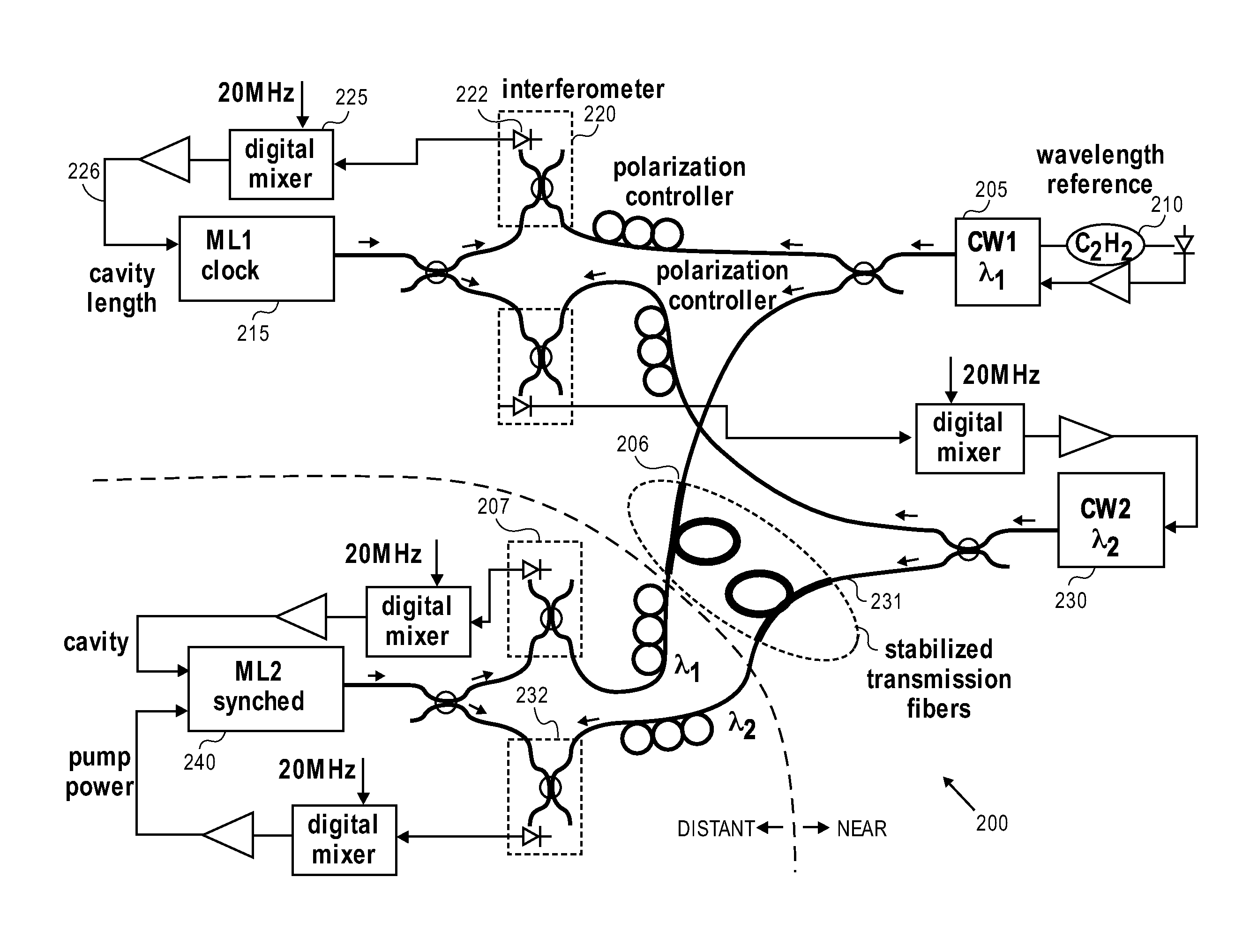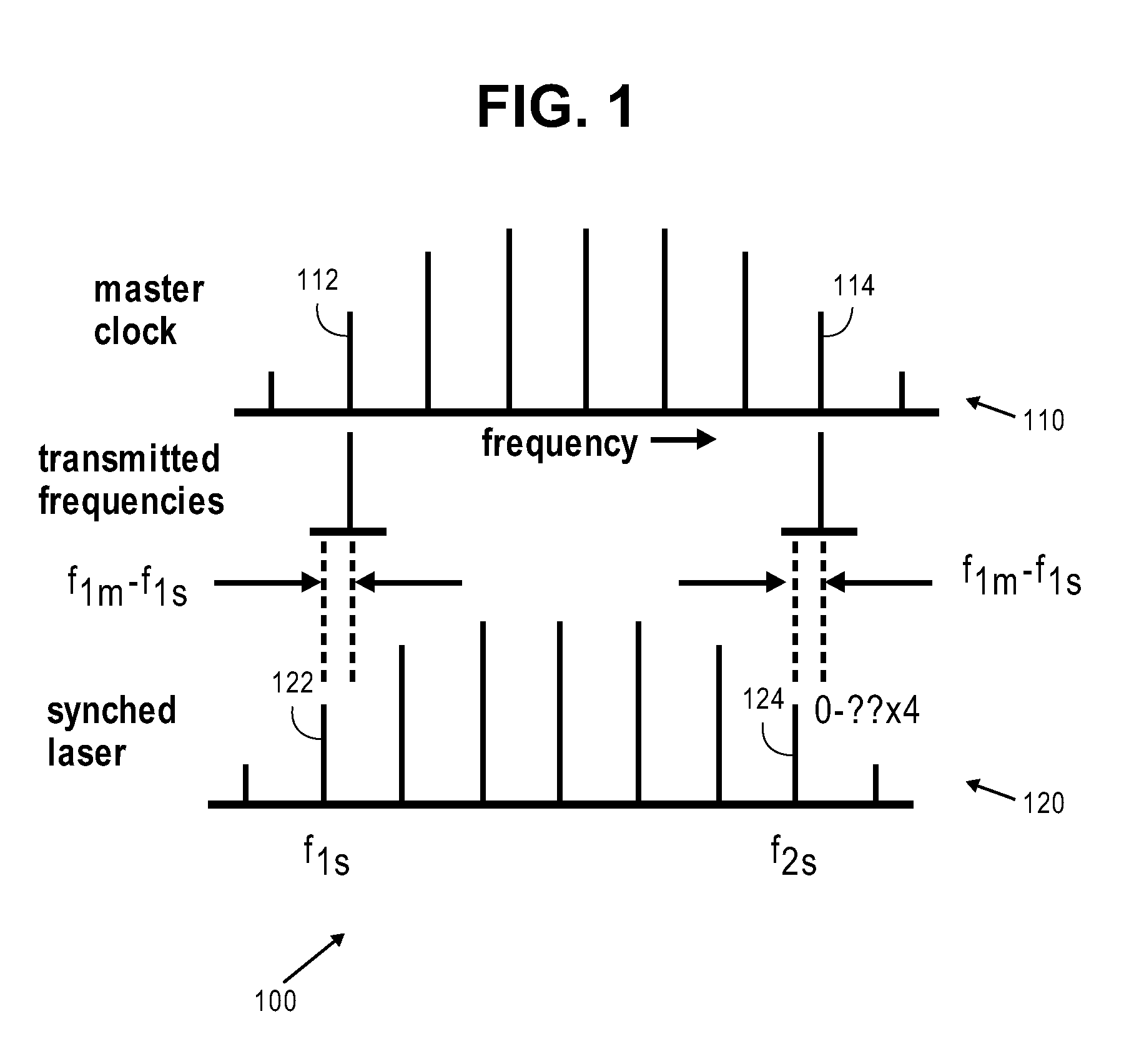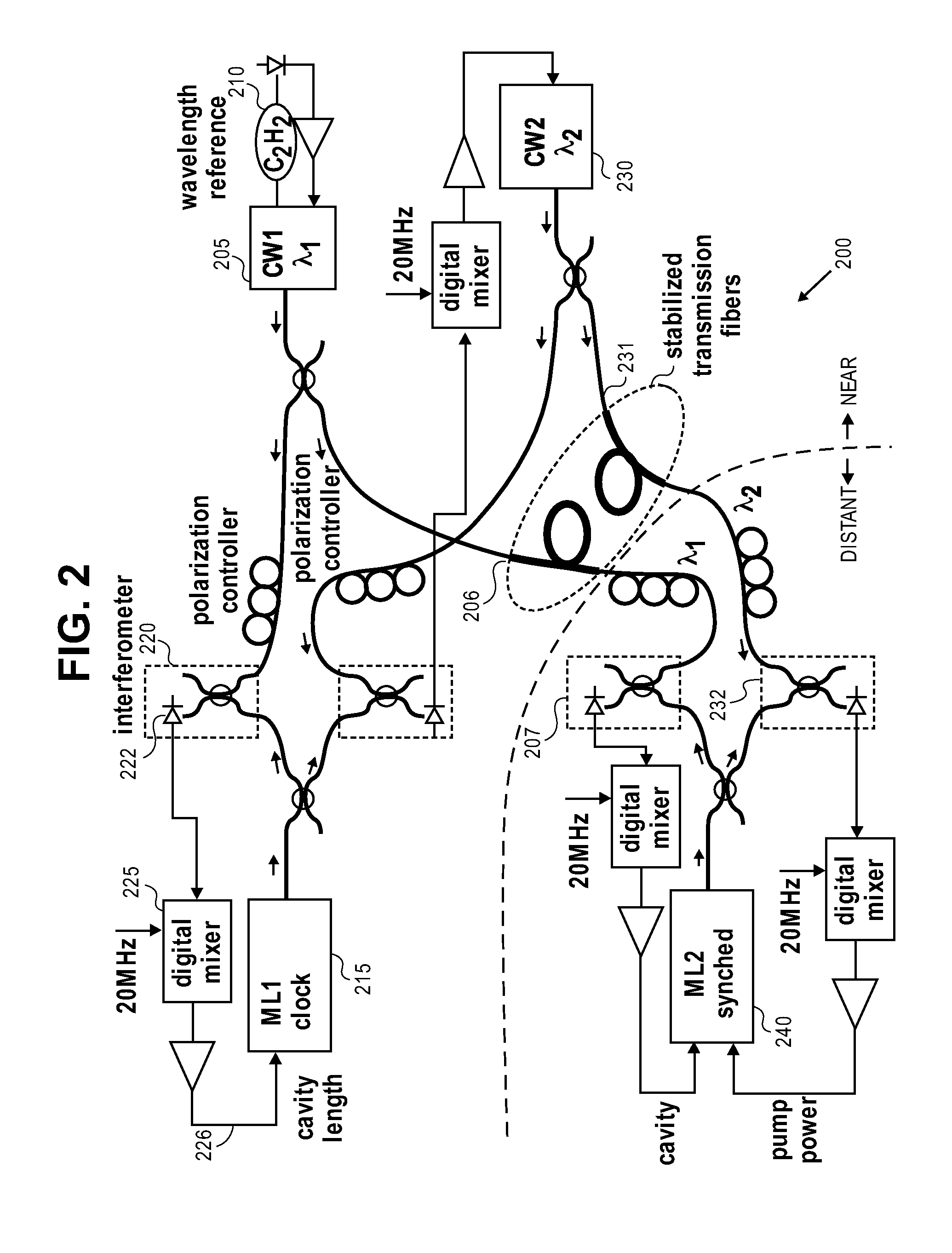Optical synchronization system for femtosecond x-ray sources
- Summary
- Abstract
- Description
- Claims
- Application Information
AI Technical Summary
Benefits of technology
Problems solved by technology
Method used
Image
Examples
Embodiment Construction
Introduction
[0033] Synchronization of short pulse lasers to a high degree of accuracy (within a time scale measured in femtoseconds, 10−15 seconds) is important in various applications, including scientific experiments investigating short time scale phenomena. Several methods exist for sending timing information through optical fiber or coaxial cable in order to provide a synchronizing signal. These methods can be characterized as using either fast temporal modulation of a signal or interferometry. In either case, the degree of temporal synchronization is proportional to the frequency transmitted. Fiber optics can transmit much higher frequencies than coaxial cables and thus achieve higher precision synchronization, so most of the recent work in this area has been with fiber optics.
[0034] Using the fast temporal modulation method, some authors have reported fiber optic synchronization systems based on radio frequency (RF) modulation of a continuous wave (CW) laser, transmission th...
PUM
 Login to View More
Login to View More Abstract
Description
Claims
Application Information
 Login to View More
Login to View More - R&D
- Intellectual Property
- Life Sciences
- Materials
- Tech Scout
- Unparalleled Data Quality
- Higher Quality Content
- 60% Fewer Hallucinations
Browse by: Latest US Patents, China's latest patents, Technical Efficacy Thesaurus, Application Domain, Technology Topic, Popular Technical Reports.
© 2025 PatSnap. All rights reserved.Legal|Privacy policy|Modern Slavery Act Transparency Statement|Sitemap|About US| Contact US: help@patsnap.com



